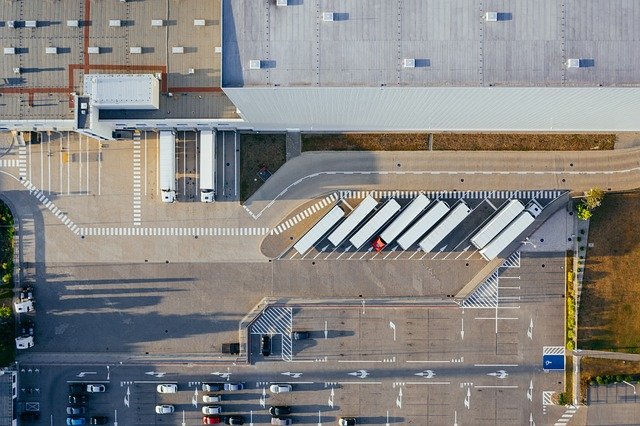Secure cargo movement with digital tracking and tamper-evident seals
Combining real-time digital tracking with tamper-evident seals strengthens cargo security across multimodal supply chains. This approach improves visibility, supports compliance with customs and regulatory checks, and helps logistics teams detect tampering or divergence early to reduce loss and disruption.

Secure cargo movement increasingly relies on layered measures that pair digital tracking with physical tamper evidence. Real-time sensors, GPS, and RFID provide continual visibility into location, temperature, and shock events, while tamper-evident seals create a physical record that an integrity breach has occurred. Together, these tools help logistics managers and customs authorities detect anomalies, reconcile data during handoffs, and enforce compliance. For international and domestic flows alike, the combination reduces risk in lastmile deliveries, multimodal transfers, and long-haul freight by making deviations easier to spot and investigate.
How does tracking protect cargo in transit?
Digital tracking gives a continuous record of a shipment’s location and condition, improving situational awareness for freight and passenger mobility operations. GPS, cellular, and satellite links report position, while IoT sensors monitor environmental factors such as temperature and humidity for sensitive goods. These data feed routing and scheduling systems to adapt plans when delays or disruptions occur. For freight carriers, visibility reduces dwell time at terminals, supports more accurate ETAs, and enables proactive responses to theft, misrouting, or damage. Tracking also generates an auditable trail useful for claims, compliance, and performance analysis.
How can routing and scheduling reduce delays and optimize flows?
Modern routing and scheduling tools combine tracking inputs with real-time traffic, port, and rail status to optimize multimodal journeys. Optimization models prioritize factors like fuel efficiency, transit time, and regulatory windows for customs clearance. Integration with fleet telematics ensures that maintenance windows and driver hours are respected, reducing unplanned downtime. Scheduling that adapts to live data shortens idle time in terminals and supports just-in-time lastmile fulfillment. For complex supply chains, improved routing lowers overall costs and mitigates delay cascades that otherwise amplify downstream disruptions.
What role does lastmile and multimodal transit play in security?
Lastmile and multimodal handoffs are high-risk moments where cargo is exposed to handling errors and opportunistic theft. Tamper-evident seals applied at each transfer point provide a visible integrity check during these exchanges, while digital tracking confirms expected positions and timing. For shipments that move by truck, rail, sea, and air, standardized seal procedures combined with synchronized tracking data create a chain-of-custody record across modes. This combined approach supports carriers and receivers in verifying that cargo arrived according to plan and assists customs or insurers in investigating irregularities.
How do tamper-evident seals support compliance and customs processes?
Tamper-evident seals help meet regulatory and customs requirements by supplying a physical indicator of integrity that complements electronic documentation. Seals can be simple numbered indicators or advanced smart seals that log opening events and transmit alerts. When used alongside digital manifests and connectivity to customs systems, seals expedite inspections by allowing authorities to focus on containers with triggered alerts or mismatched tracking records. Clear procedures for seal application, recording, and verification are essential to ensure that seals serve as reliable evidence during audits and cross-border movement.
How does fleet maintenance enable operational optimization and resilience?
Regular fleet maintenance, tracked through integrated systems, reduces the risk of mechanical failures that cause unscheduled stops and cargo exposure. When maintenance schedules are linked to routing and scheduling platforms, operators can sequence repairs with minimal service impact. Predictive maintenance, driven by telematics and sensor analytics, reduces the likelihood of in-transit breakdowns that create security vulnerabilities. Maintaining a healthy fleet supports reliable ETAs, which in turn reduces the need for opportunistic rerouting that could bypass established security and customs procedures.
How does connectivity improve mobility for freight and passenger services?
Connectivity ties tracking, fleet systems, customs interfaces, and operational dashboards into a coherent picture for decision-makers. Reliable communications minimize blind spots during transfers, enabling faster response to delays, weather events, or security incidents. For passenger mobility, connected systems ensure that safety and scheduling priorities align across modes; for freight, connectivity supports synchronized handoffs and improved lastmile delivery predictability. Strong network resilience and data integrity practices are necessary to prevent false alerts or gaps that undermine trust in the tracking and sealing ecosystem.
Conclusion
Combining digital tracking with tamper-evident seals strengthens cargo security by creating complementary electronic and physical records of a shipment’s journey. Visibility through tracking, coordinated routing and scheduling, disciplined seal procedures at multimodal handoffs, proactive fleet maintenance, and robust connectivity each play a role in reducing loss, enabling compliance, and improving operational predictability. Organizations that design processes around both data and physical controls create clearer chains of custody and better tools for responding to anomalies without making speculative claims about specific vendors or technologies.





